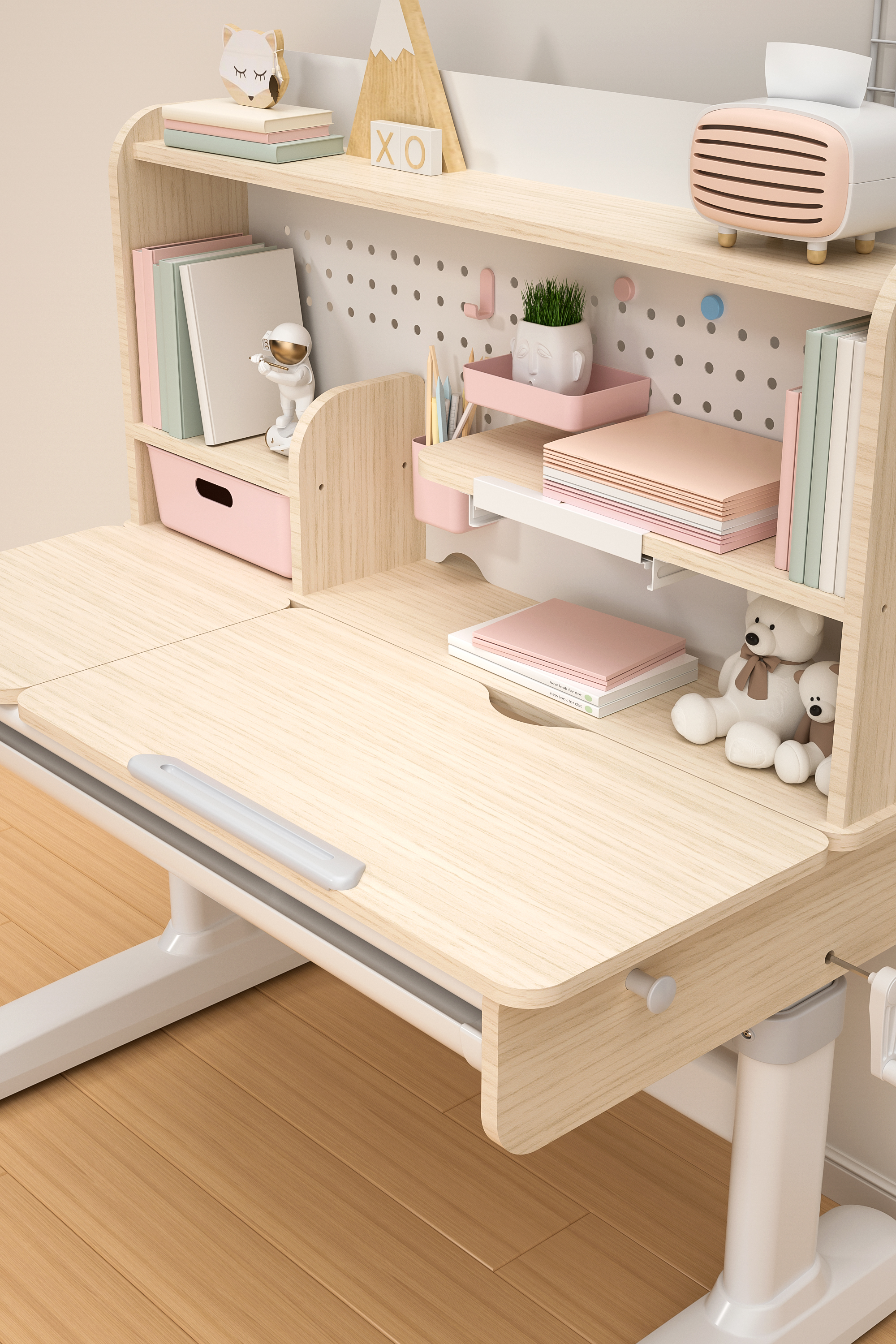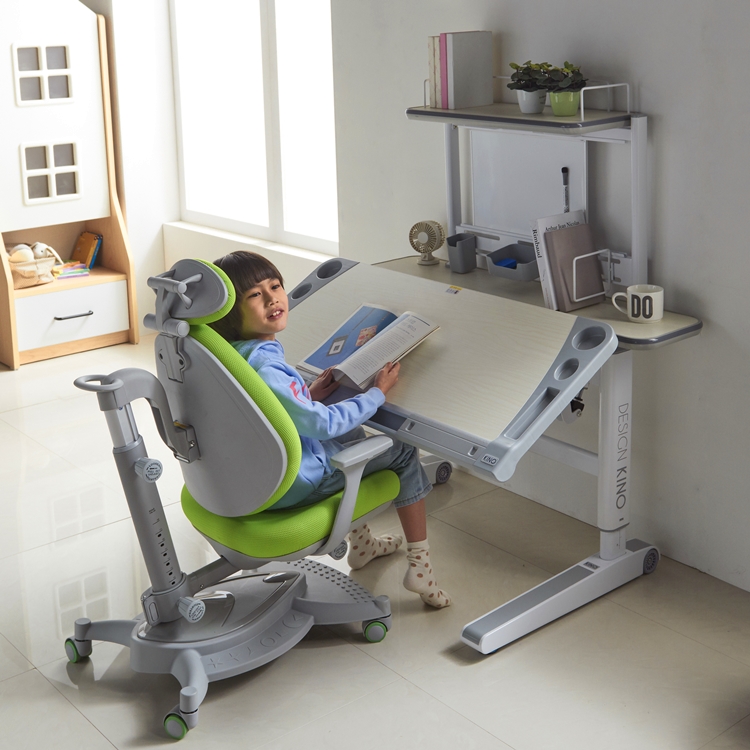Ergonomic Children's Desk and Chair: Empowering Children's Mental Health with Scientific Design, Creating Core Value for Parents
As a supplier specializing in children's growth equipment, we deeply understand that when parents choose children's desks and chairs, they not only pay attention to the practicality of the products but also care about their long-term impact on their children's growth. The core value of ergonomic children's desks and chairs lies in directly influencing children's mental health through the scientific design of colors, specifications, and sizes, thereby solving the actual pain points of parents in the process of raising children.
I. Application of Color Psychology: Nourishing Emotions with Visual Language, Reducing Parents' Anxiety about Children's Emotional Management
Morandi color desktop: Adopt low-saturation colors such as grayish pink, light blue, and off-white. These colors can reduce visual stimulation, allowing children to quickly calm down when doing homework or reading. For example, a light blue desktop can simulate the openness of the sky and the ocean, reducing the sense of depression caused by a confined space, and is especially suitable for children with weak concentration. Parents do not need to repeatedly remind their children "not to be distracted"; the environment itself is guiding children into a state of concentration.
Contrasting color edge design: The corners of the table and the legs of the chair are decorated with high-saturation colors such as orange-yellow and bright green. This not only caters to children's natural love for bright colors but also strengthens the sense of spatial boundaries through visual contrast. This design can help children establish a psychological cognition of "learning area" and "playing area", reducing the resistance of "feeling irritable when sitting at the desk", so that parents no longer worry about their children "not loving learning".

II. Dynamic Size Adaptation: Comfort That Grows with the Child, Alleviating Parents' Worry about "Fast Product Obsolescence"
Height adjustment (40-75cm): When a child's height increases from 110cm to 160cm, the desk and chair can be raised synchronously, always maintaining the golden sitting posture of "feet flat on the ground, knees at 90°, and elbows naturally resting on the desktop". For example, when an 8-year-old child uses it, the height of the desktop is adjusted to 52cm, and the chair height is 38cm, making the body feel no tightness; when the child is 12 years old, the desktop height is adjusted to 70cm and the chair height to 45cm, still maintaining comfort. This "always fitting" experience makes children feel "their growth is respected", avoiding the inferiority complex caused by desks and chairs being too small.
Depth and width adjustment: The depth of the desktop can be expanded from 40cm to 60cm, which can accommodate different needs from picture books to A3 drawing papers; the width of the chair increases from 32cm to 40cm, fitting the growth of the child's shoulder width. This adaptability makes children feel "this is a space designed specifically for me", enhancing their sense of belonging and reducing resistance to the learning environment. For parents, a set of desks and chairs can be used for 6-8 years, avoiding the economic cost and energy consumption of repeated purchases.

III. Construction of Exclusive Space: Cultivating Psychological Resilience with Detailed Design, Saving Parents from the Trouble of "Difficult Habit Cultivation"
Zoned storage system: The desktop is divided into three functional areas: a picture book area, a stationery grid, and a display platform, separated by light gray lines in color. This visual zoning can guide children to take the initiative to organize their belongings, reducing the "irritability when looking for things". Studies have shown that children who use zoned desks and chairs for a long time have a 32% reduction in procrastination behavior, which stems from the "sense of control brought by order". Children will enhance their self-confidence because "they can manage their own space".
Rounded corner design: All corners adopt a 5cm radius rounded corner, with a warm touch. This design conveys a "safety signal" both visually and tactilely, allowing children to move around and pick up things without tension, and imperceptibly cultivating a sense of security. For parents, this means less "worry about bumps and collisions". More importantly, children in a safe environment will be more daring to try independent activities, accelerating their psychological maturity.

